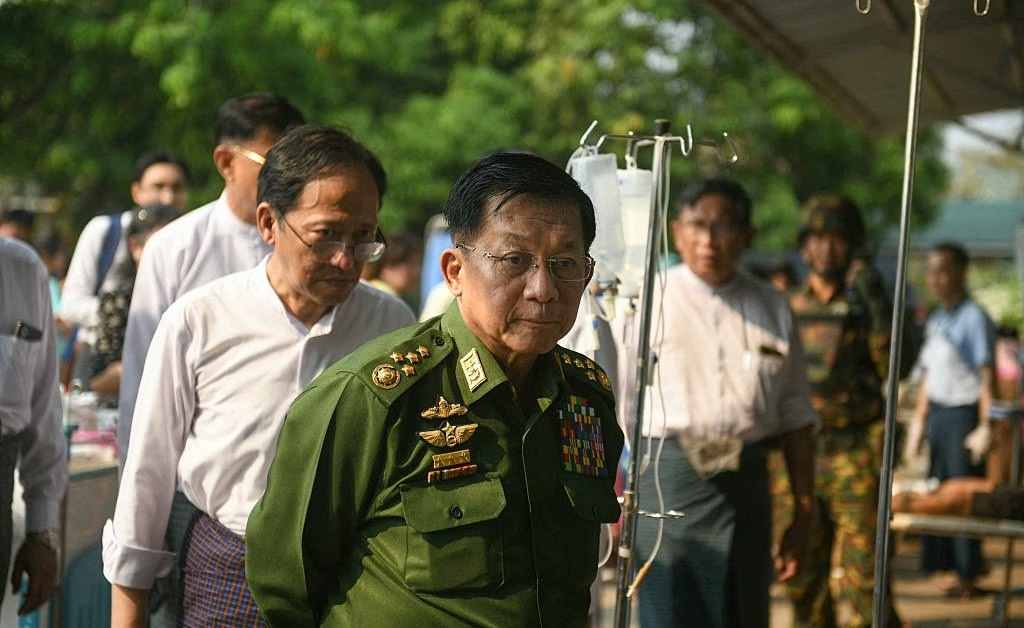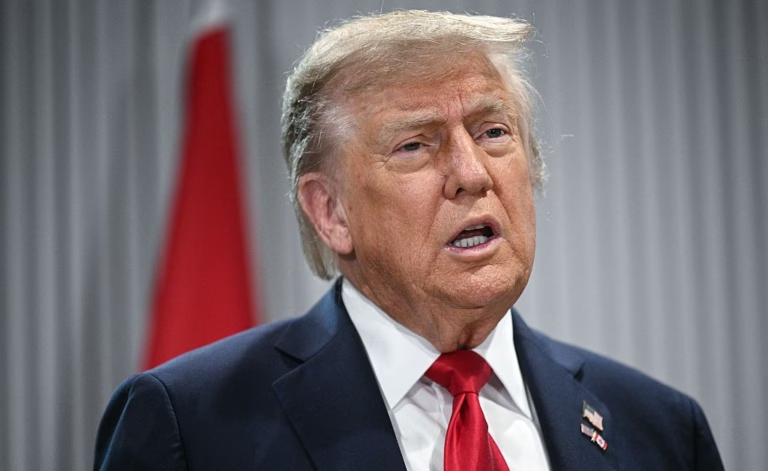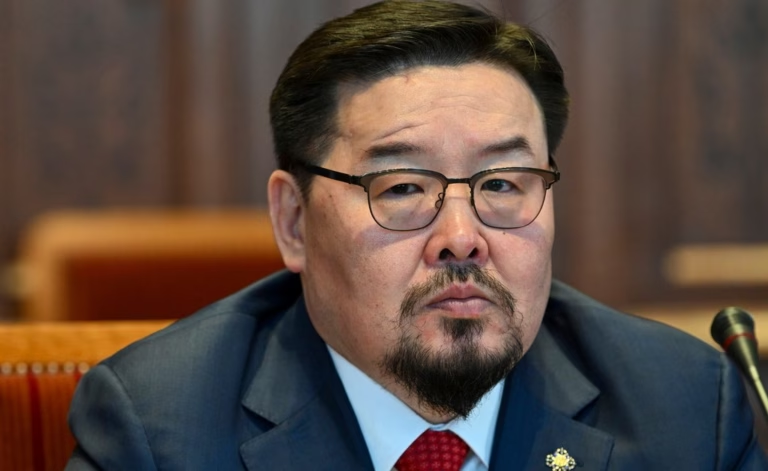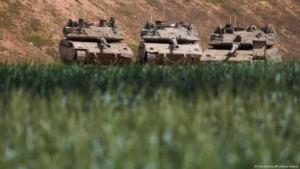Myanmar’s junta government doesn’t often want others to intervene in its affairs.
Years of internal strife and alleged human rights abuses in the authoritarian-led Southeast Asian nation have pushed it toward isolation. But after a 7.7-magnitude earthquake ripped through the country on March 28, killing thousands, the disputed military leadership made a rare cry for help.
“We need and want the international community to provide humanitarian aid,” said spokesman Gen. Zaw Min Tun in the immediate aftermath of the tremors. “We will cooperate with them to ensure the best care for the victims.”
Read More: Photos Show Devastating Impact of Powerful Earthquake That Rocked Myanmar and Thailand
But recovery efforts—including understanding the full extent of the damage and getting aid to where it’s needed most—are complicated by Myanmar’s ongoing civil war.
Since staging a coup in 2021, the Tatmadaw—Myanmar’s military—has been in breakout wars with pro-democracy rebels and ethnic militias across the country. Even before the quake struck, the nation of 52 million was already fractured. More than 6,000 civilians have died and over three million have been displaced since 2021, according to Genocide Watch; critical infrastructure linking cities and communications were heavily damaged or destroyed; and press freedoms were virtually nonexistent. The health care system was also already under strain: hospitals in Mandalay and Naypyidaw, the largest urban areas impacted by the quake, are overwhelmed with patients, face shortages in medical supplies, and were hard hit even before the disaster, particularly since the junta has for years deliberately closed facilities that hired medical staff who were professionally blacklisted for aligning with the Civil Disobedience Movement, an anti-junta protest movement involving non-cooperation with the military.
The country, says Burmese activist Maung Zarni, was “utterly unprepared for natural calamity.”
Here’s what to know about the challenges today—and where the country could go from here.

‘We still don’t have a clear picture’
Initial estimates suggested the quake’s death toll in Myanmar could exceed 10,000—but the true total may never be known.
Many international journalists have been blocked from entering impacted areas, and internet blackouts that originated before the quake have limited the reach of images and information from the ground. The Myanmar Internet Project has recorded 357 total internet shutdowns since the coup in Feb. 2021, and every township has experienced some level of communications outage at least twice since the coup, according to Myanmar-focused pro-freedom of expression nonprofit ATHAN.
For the junta, taking these areas off-grid is a two-pronged strategy: to disrupt the flow of information among resistance groups and to isolate these areas from global attention, ISEAS – Yusof Ishak Institute researcher Surachanee Sriyai wrote in January, before the earthquake.
Calls for the junta to lift internet restrictions to facilitate emergency rescue efforts have mounted, while researchers say power outages as a result of the earthquake only further limit access.
Compare the coverage of the earthquake in Thailand, where tremors and damage have been extensively reported, posted and documented, to Myanmar, where we still don’t have a clear picture of the extent of the damage and loss and may not for some time, Joe Freeman, a Myanmar researcher at Amnesty International told the New York Times.
If any information trickles out, it likely has the junta’s approval. Min Aung Hlaing (MAH), the military commander-in-chief and Myanmar’s unelected leader, made visits to earthquake hit areas, flanked by pro-junta outlets and select foreign media. More critical local press slammed MAH’s appearances for treating the disaster as photo opportunities, claiming it was in effort to boost his international image.
Such images have little impact domestically, says Phil Robertson, director of the Asia Human Rights and Labor Advocates Consultancy. “There’s nothing that Min Aung Hlaing can do to improve his image in the eyes of the Burmese people,” he tells TIME.
The recovery effort also appears to function as a display of political alliances: the Australian Broadcasting Corporation reported that emergency responders from China and Russia were allowed to fly into Yangon, while multiple Western aid agencies struggled to get into the country. (Emergency workers from Taiwan, which junta ally China does not recognize as independent, were even told to stand down.)
‘Willingness to weaponize aid’
What aid does reach Myanmar, some worry, may not end up in the right hands.
A group of 13 civil society organizations in Myanmar put out a statement on March 30, appealing for humanitarian assistance on the ground while also warning against channeling such aid through the military junta. The junta has “a long history of weaponizing aid by blocking, diverting, and exploiting it to consolidate its control,” the statement said. Across the world, Burmese people living overseas have echoed that concern, instead imploring those who wish to help to donate to grassroots organizations.
These concerns are based on past experience. In 2008, after Cyclone Nargis killed at least 84,500 people in Myanmar, the junta at the time refused to receive international assistance, lacking the transportation infrastructure and organization to distribute aid and rejecting pleas from an exasperated international community to set up a transport corridor for foreign aid workers. The current junta similarly blocked relief in 2023 after Cyclone Mocha, denying visas to aid workers and holding up aid packages in customs.
U.N. Special Rapporteur Tom Andrews said in a post on X that the junta’s response to previous natural disasters “demonstrate[s] its willingness to weaponize aid.”
International coordinators of the emergency response to the latest quake and rescue workers on the ground have accused the junta of confiscating aid, The Guardian reported. One doctor claimed that the military was using its control over checkpoints to block medicine from going to areas controlled by pro-democracy forces and ethnic groups.
The junta controls only less than a quarter of the country, according to the BBC, but access to areas it doesn’t control are more highly restricted. In Naypyidaw, the seat of the junta, the regime has provided robust assistance, including water, temporary toilets, and phone-charging stations. But in the more densely populated city of Sagaing, which was also severely impacted by the quake but is a pro-democratic stronghold, locals have reported a less urgent aid response. (Sagaing already had the most townships lacking public services like electricity and water, according to a 2024 report from research group Institute for Strategy and Policy-Myanmar.)
Richard Horsey, senior Myanmar adviser of the International Crisis Group, tells TIME that the junta has “a track record of blocking aid to areas controlled by its adversaries,” and has used blockades to “deprive its enemies of resources,” which he believes “has certainly given pause to some donors and will negatively impact levels of assistance.”
How the quake could impact the war
To many in Myanmar, the quake is an omen.
In the deeply superstitious nation, an astrologer told Al Jazeera they believe the tremors signal that the junta’s “downfall is not far away.”
Some commentators also see the natural disaster as a window of opportunity to spur the end of the protracted conflict. The junta’s sluggish response to the 2008 cyclone ramped up scrutiny of the military government at the time and placed pressure on it to change, eventually leading to the rise of a civilian government, albeit short-lived.
The National Unity Government (NUG)—a shadow government composed of those ousted in the 2021 coup—proposed a two-week cease-fire from March 30 to allow for emergency rescue operations, promising to pause “offensive military operations, except for defensive actions.” The Three Brotherhood Alliance, an alliance of the Myanmar National Democratic Alliance Army, the Ta’ang National Liberation Army, and the Arakan Army, joined that call, announcing a monthlong cease-fire.
But for now at least, that cease-fire remains one-sided: junta chief MAH rejected the proposal, arguing that organizing and training by ethnic armed groups “are still considered attacks.” The NUG on March 31 claimed the military continued with airstrikes in Sagaing, as well as Karenni, Mandalay, and Naypyidaw, even though there’s already extensive earthquake damage in those areas. The Ta’ang National Liberation Army also claimed the junta attacked a Chinese Red Cross convoy that was bringing aid supplies to Mandalay on April 1. The rebel group said the convoy had reported its route to the military, which a junta spokesman disputed to state-run MRTV.
While Naypyidaw may have suffered damages from the quake, Morgan Michaels, a Southeast Asian security and defense research fellow at the International Institute for Strategic Studies, tells TIME these weren’t significant enough to hamper military campaigns and stop attacks: “The runway is serviceable, and satellite imagery shows that hangars didn’t collapse. Airstrikes continue.”
“The generals are insane to seek to politically and materially benefit from the newly emerging international goodwill towards Myanmar people and to keep bombing cities and towns and rebel positions, including schools and religious sites,” Zarni, the Burmese activist, tells TIME. “The junta is 100% focused on keeping itself in power,” says Zarni. “Those in charge of the military operations seem determined to wage on their wars.”
Source: https://time.com/7273653/myanmar-junta-earthquake-recovery-aid-civil-war-explainer/







